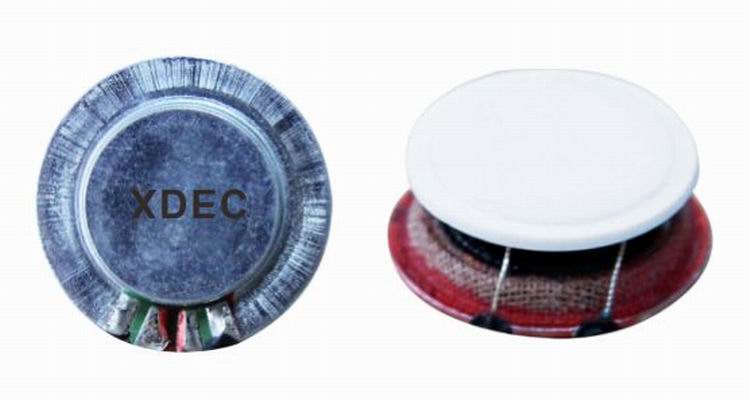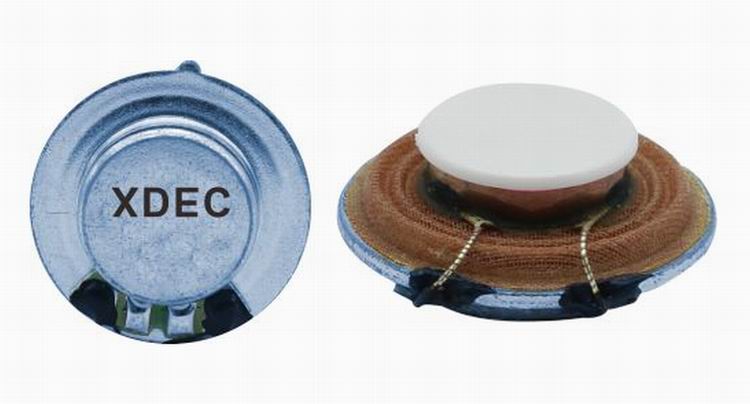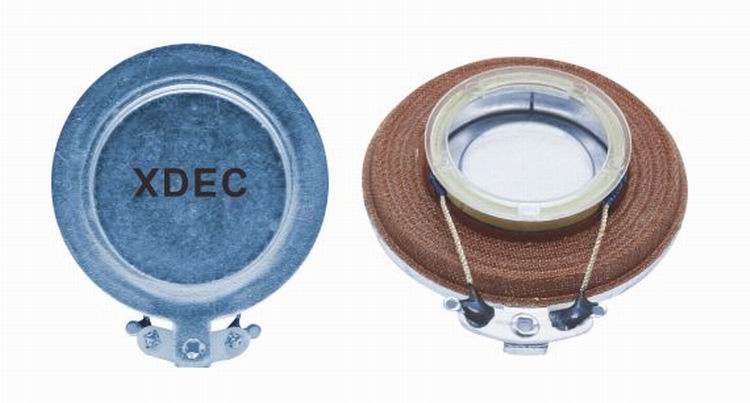Speakers can be connected in series or in parallel, or they can be connected in series and in parallel. The speakers are connected in series and in parallel to get the required impedance and power output.
   Speaker impedance
Note: Suppose R represents the total impedance, R1 represents the impedance of a single speaker, and N represents the number of speakers.
Resistance string parallel
In series: R = R1 + R2 + ... ... Rn.
Parallel: 1/R=1/R1+1/R2+...1/Rn
When the speakers are connected in series or in parallel, we require the same power and impedance, preferably the same type of speakers of the same brand.
The above formula is reduced to:
Series: R=NR1
Parallel: R= R1/N
When the speakers are connected in series or in parallel, usually we are all in pairs. Therefore, when two speakers are connected in series, the total impedance is equal to the individual speaker impedance multiplied by 2, and when the two speakers are connected in parallel, the total impedance is equal to the individual speaker impedance divided by the number of speakers. According to the formula, the total impedance is 16 ohms when two 8 ohm speakers are connected in series. In parallel, it is 4 ohms.
  Speaker power consumption
Ohm's law, the current in a conductor is proportional to the voltage across it and inversely proportional to its resistance. This is Ohm's law. I represents the current through the conductor, U represents the voltage across the conductor, and R represents the resistance of the conductor.
Ohm's law:
I=U/R
The power consumption of the speaker is calculated according to the electric power:
P=U2/R
First look at the situation of the series
Because the rated power of the speaker does not change, the rated power of the two speakers in series is the individual speaker rated power multiplied by 2.
When the speakers are connected in series, the power consumption will not increase, but will decrease. This is because the impedance of the two speakers is the same, so they split the voltage of the amplifier output, that is:
Single speaker power:
P1=(U/2)2/R
That is to say, each speaker consumes only 1/4 of the power before the series connection, and the total power consumed by the two speakers in series is only half of the power consumption of a single speaker that is not connected in series. So the sound will be smaller, but it also shows that the speaker group after the series has a lot of power potential.
Look at the situation of paralleling
Because the two speakers are connected in parallel, the voltage applied to the two speakers does not change and is the same, so the power consumed by a single speaker does not change, and the total power consumed is equal to the power of a single speaker multiplied by 2 - this is a test for your amplifier. The most common in reality is the parallel connection of the speakers.
What about series and then parallel?
The four speakers are connected in series and then in parallel. The total rated power is (P1+P1)x2, which can also be understood as the sum of the rated power of 4 speakers.
Because the two speakers are connected in series and then in parallel, the voltage on each speaker is still only 1/2 of the original, so the actual power consumption of these four speakers is only 1/4 of their rated power. To really push the four speakers first. And the speaker group not only needs the overall impedance and power matching of the power amplifier and the sound group, but also requires a huge current output.
In theory, a power amplifier rated power is 400W (4Ω), four speakers, rated power 100W (4Ω). After the four speakers are serialized, the total impedance is still 4Ω, and their total rated power can reach 400W (4Ω).
In terms of impedance matching, the parallel connection of the speakers, or series and parallel can save the number of amplifiers and save money. but! If you come back to reality, the above theory may not work. Because the live sound reinforcement is not a speaker to do various experiments. It is best to follow the manufacturer's instructions.
Series, parallel, serial and parallel practical considerations
In general, the most commonly used ones are the parallel connection of the speakers, but it should be noted that although some amplifiers can work on the surface under the impedance of the parallel connection, it may be the end of the power, we must understand the current output capability of the amplifier can be used, otherwise It may burn the amplifier and speaker system.
For example, if a power amplifier has an impedance of 8 ohms, the average output voltage of the amplifier is 100V, and the maximum output current is 12A, which is equivalent to 1200W output. If the second speaker system is connected in parallel, the impedance drops to 4 ohms and the amplifier should provide twice the current (24A). But this is impossible because this current is beyond its limits.
Some amplifiers have a "load matching system", such as LAB.GRUPPEN's MLSTM technology, which can be converted from 100V X12A mode to 80V X15A or 55V X22A mode if it is found to be unable to provide such a strong current. This will continue to work.
Speakers are not just connected in series. They are all connected in series and parallel mode. In the case of a large number of speakers, the strings are 16 Euros and then 8 Euros or 4 Euros or even 2 Euros. The number of speakers is increased, the power is increased, and your power is increased. Also increase. In the case of the same model of the small power speaker, the connection method of this "principle" can be used. The speaker is not suitable for high power and different models.
In a serial-parallel circuit, if the impedance of the two speakers is deviated (there are no speakers with the same impedance), the relative power of the larger impedance is greater than the one with a slightly smaller impedance. Moreover, after the serial connection, the parallel connection may occur, and if the burning failure occurs in the serially connected unit, or the voice coil is short-circuited, the rear speaker may be damaged and damaged.
Therefore, it can be said that the stability and reliability of the speaker system in which the speakers are connected in parallel or in series and parallel are poor. It is very cautious in debugging, and it should be fine-tuned little by little.
Of course, if you encounter a bunch of speakers and amplifiers that don't match them, you must carefully match them.
Confirm the rated power and impedance of each amplifier before combining.
And the rated power and impedance of each speaker.
Second, we must strictly abide by the matching rules of speakers and amplifiers.
Such as: two 8 ohm, 350W box, the impedance becomes 4 ohms in parallel, the total power is 700W, can be pushed with 4 ohm 1000W power amplifier.
For example, there are 8 100W8 ohm speakers, one 800 watt per channel amplifier (4 ohms), which can be connected with 4 speakers per channel.
Personally think: it is best that the resistance is the same, the power of the amplifier is 1.5 times that of the speaker; the impedance of the speaker is never allowed to be less than the impedance of the amplifier, and the impedance of the speaker can be slightly larger than the impedance of the amplifier. , but the difference between the two can not exceed 4 ohms.
(1) In general, speakers with built-in crossover cannot be connected in series, otherwise it may appear after series connection:
The positive speaker is more normal, and the negative speaker frequency is weaker than the positive speaker. When the volume is adjusted, the volume of the positive speaker is greater than that of the negative speaker.
(2), professional external electronic crossover mode crossover speakers can be connected in series. Also, please remember that if the speaker's nominal impedance is different, it must not be connected in parallel.
(3), professional speaker parallel is commonly used in engineering, but requires the same power, it is best to have the same model, 8 ohm speakers can only be connected in parallel 2, 12 ohm boxes can only be connected in parallel, because the resistance after parallel is low At 4 ohms, the amplifier is easily protected, the heat is significantly increased, and the sound quality is very noisy. Therefore, most of the power amplifier circuits are designed with a 4-16 ohm value.
Some imported speakers in the world are divided, and the medium and high frequency are mostly 16 ohms. In this case, the general manufacturers will have professional guidance in the manual.
Vibration speaker:
Vibration speaker is a kind of speaker unit which is made from vibration principle. It is also called resonance speaker. Vibration speakers have no diaphragms and also called exciters. They drive any solid plane surface they contact and made that surface sound, so people can have original sound from different materials. Vibration speakers have a special penetrability which traditional speakers don`t have. These kind of speakers are mainly used for digital audio speakers, music massage facilities and music treatment facilities.
Our main vibration speakers include:
1) From the diameter: we have speakers in diameter of 18mm ~ 44mm.
2) From the power output, we have speakers of 2W ~ 15W.



FAQ
Q1. What
is the MOQ?
XDEC: 2000pcs for one model.
Q2. What is the delivery lead time?
XDEC: 15 days for normal orders, 10 days for urgent orders.
Q3. What are the payment methods?
XDEC: T/T, PayPal, Western Union, Money Gram.
Q4. Can you offer samples for testing?
XDEC: Yes, we offer free samples.
Q5. How soon can you send samples?
XDEC: We can send samples in 3-5 days.
Vibration Speaker,Vibration Driver,Vibro Speaker,Vibration Bluetooth Wireless Speaker
Shenzhen Xuanda Electronics Co., Ltd. , https://www.xdecspeaker.com